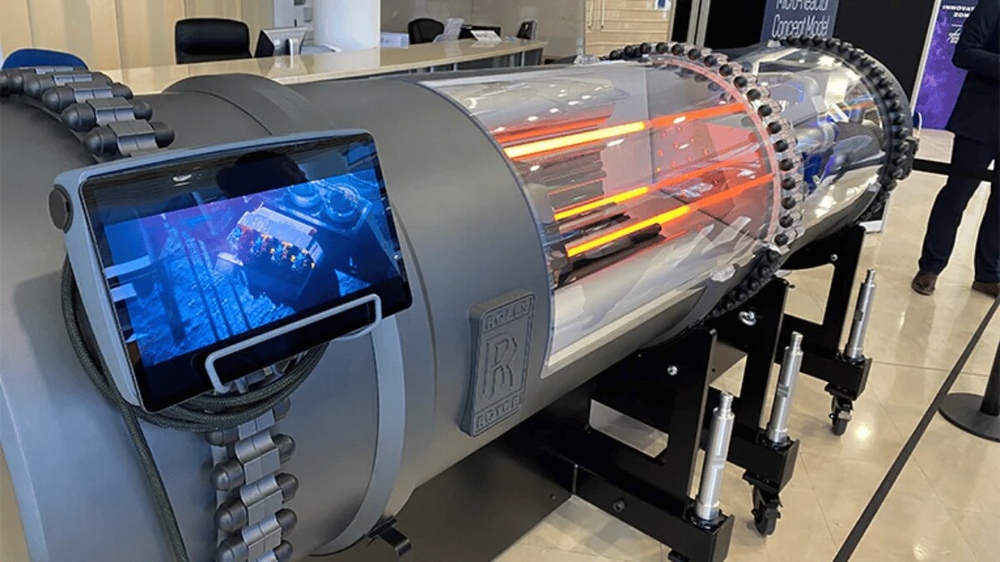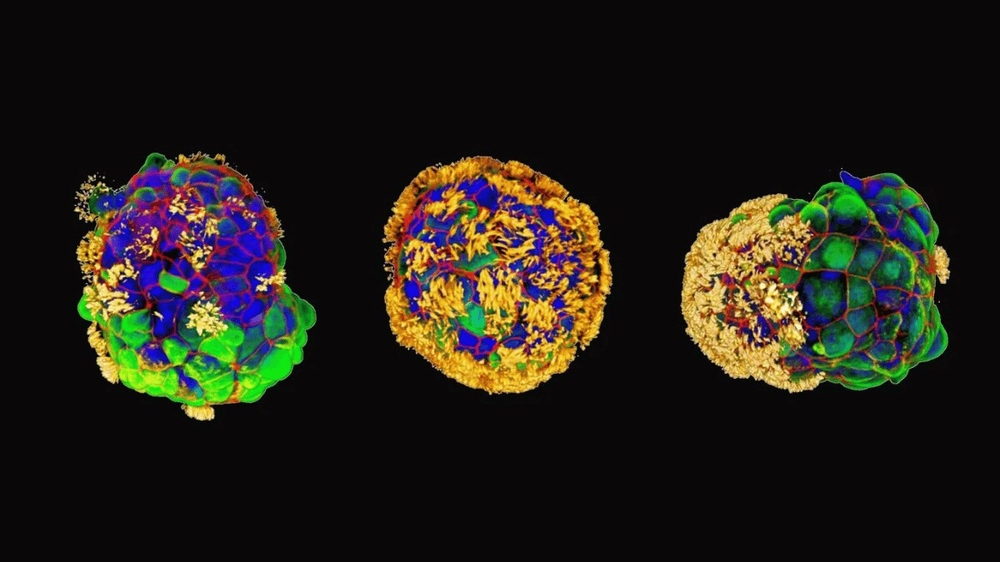Page Contents:
- Lunar Base Power Source
- Collaborative Innovation
- Beyond Space: Earth Applications
- Rolls-Royce’s Vision for Space Technology
- Ambitious Timeline
- Early Nuclear Power Systems in Space
- Radioisotope Thermoelectric Generators (RTGs)
- Fission Systems in Spacecraft
- Nuclear Propulsion Research
- India’s Entry into Space Nuclear Power
- Project Rover
- International Collaborations and Plans
- Expanding Horizons
- Interesting Facts:
Rolls-Royce has taken a giant leap into the future of lunar exploration by unveiling its Space Micro-Reactor model. Funded by a £2.9 million grant from the UK Space Agency, this groundbreaking project aims to power future Moon bases, pushing the frontiers of space exploration and energy generation.
Lunar Base Power Source
This nuclear Space Micro-Reactor is not just another power system. It’s a game-changer in space energy. Designed to operate in the harsh conditions of space, it offers a reliable power source “regardless of location, available sunlight, and other environmental conditions.” Its compact and lightweight design makes it a versatile option for various space missions, from powering lunar bases to propelling spacecraft and satellites in orbit. The Micro-Reactor’s ability to provide continuous power is crucial for the habitation and exploration of planetary surfaces and for protecting key orbits in space.
Collaborative Innovation
The project is a collaborative effort, bringing together the minds at Rolls-Royce, Oxford, Bangor, and Loughborough universities, the Welding Institute, and the Nuclear Advanced Manufacturing Research Centre (NAMRC). These partnerships are key to developing the Micro-Reactor’s core features: the fuel for heat generation, heat transfer methods, and the technology to convert this heat into electricity.
Beyond Space: Earth Applications
Abi Clayton, Rolls-Royce’s director of Future Programmes, highlights the dual benefits of this technology, stating that the Space Micro-Reactor Concept Model “will bring immense benefits for both space and Earth.” This vision is echoed by Dr. Paul Bate, CEO of the UK Space Agency, who sees the development of space nuclear power as a unique opportunity to grow the UK’s nuclear, science, and space engineering skills base.
Rolls-Royce’s Vision for Space Technology
The Micro-Reactor is part of Rolls-Royce’s broader vision for space technology, which includes developing a small modular reactor (SMR) for consistent baseload generation. Their SMR, based on a small pressurised water reactor, is designed for a lifespan of at least 60 years. The Micro-Reactor, even smaller than the SMR, is defined by the International Atomic Energy Agency as capable of generating power typically up to 10 MWe.
Ambitious Timeline
Rolls-Royce is targeting the early 2030s to send a reactor to the Moon. This ambitious timeline marks a significant commitment to advancing space exploration and energy technology.
Early Nuclear Power Systems in Space
The journey began with the U.S. launching the Transit 4A navigation satellite in 1961, powered by a Radioisotope Thermoelectric Generator (RTG) developed by the Atomic Energy Commission. This marked the first use of nuclear energy to power a U.S. spacecraft, setting a precedent for future space missions.
Radioisotope Thermoelectric Generators (RTGs)
RTGs have been the backbone of the U.S.’s space nuclear power for over fifty years, praised for their reliability and longevity. Over 25 different U.S. spacecraft have benefited from RTGs, some even surpassing two decades of operation. These generators are essential in regions of space where solar energy is ineffective, showcasing their versatility and importance.
Fission Systems in Spacecraft
1965 was another landmark year when the U.S. launched the SNAP-10A space reactor. Concurrently, the Soviet Union launched several fission reactors in their RORSAT satellites from 1967 to 1988. These advancements illustrated the growing global interest and capabilities in space nuclear technology.
Nuclear Propulsion Research
NASA’s over 60 years of research into nuclear thermal propulsion underscores its potential for future space exploration, particularly for crewed missions to Mars. This propulsion system offers performance benefits far exceeding those of traditional chemical propulsion systems.
Similar Posts
India’s Entry into Space Nuclear Power
In 2021, India’s Space Research Organisation (ISRO) sought proposals for developing a 100-watt RTG, signaling a significant stride in India’s foray into nuclear space technology.
Project Rover
Initiated in the late 1950s, Project Rover focused on nuclear-powered rocket technology, using hydrogen to test the limits of high-temperature nuclear reactor operation. This project laid foundational research for future nuclear propulsion systems.
International Collaborations and Plans
The surge in international activities, like the joint Chinese-Russian lunar base and China’s 2021 Mars rover mission, highlights the growing global collaboration and competition in space exploration.
Expanding Horizons
This project is not just about lunar exploration. Its implications for Earth-based energy generation are vast. It promises to deliver clean, safe, and reliable energy, contributing to the decarbonization of industries and advancing defence capabilities. The development of Rolls-Royce’s Space Micro-Reactor is a continuation of a rich legacy of nuclear power in space exploration.
Interesting Facts:
- RTGs: A Steady Power Source: For over half a century, Radioisotope Thermoelectric Generators (RTGs) have been a reliable nuclear power source for U.S. space missions. They have powered over 25 different spacecraft, some for more than two decades, due to their safety, durability, and maintenance-free nature.
- Advancing with ASRG: The Advanced Stirling Radioisotope Generator (ASRG) represents a significant improvement over traditional RTGs, producing four times the electric power per unit of fuel. Flight-ready units are anticipated by 2028.
- SNAP-10A: Pioneering U.S. Space Reactor: Launched in 1965, SNAP-10A was the United States’ first venture into space reactors, developed by Atomics International.
- Soviet Union’s Active Role: Between 1967 and 1988, the Soviet Union launched 31 low power fission reactors (BES-5) in their RORSAT satellites, and later developed TOPAZ reactors with the first test flight in 1987.
- NASA’s Focus on Nuclear Propulsion: For over six decades, NASA has been researching nuclear thermal propulsion, a promising technology for future Mars missions, offering high thrust and improved propellant efficiency.
- Nuclear Power on the Moon: The Apollo missions’ Apollo Lunar Surface Experiment Package (ALSEP) included 70-watt SNAP-27 RTGs, contributing significantly to our lunar knowledge.
- RTGs in Planetary Exploration: RTGs have powered missions like Galileo to Jupiter, Ulysses to study the heliosphere, and Cassini to Saturn. The New Horizons spacecraft, with a GPHS-RTG, conducted the farthest planetary flyby in history.
- Enduring Pioneer and Voyager Missions: Launched in the 1970s, Pioneer 10 and 11, and Voyager 1 and 2, all RTG-powered, have made groundbreaking discoveries and remain operational decades later.


















